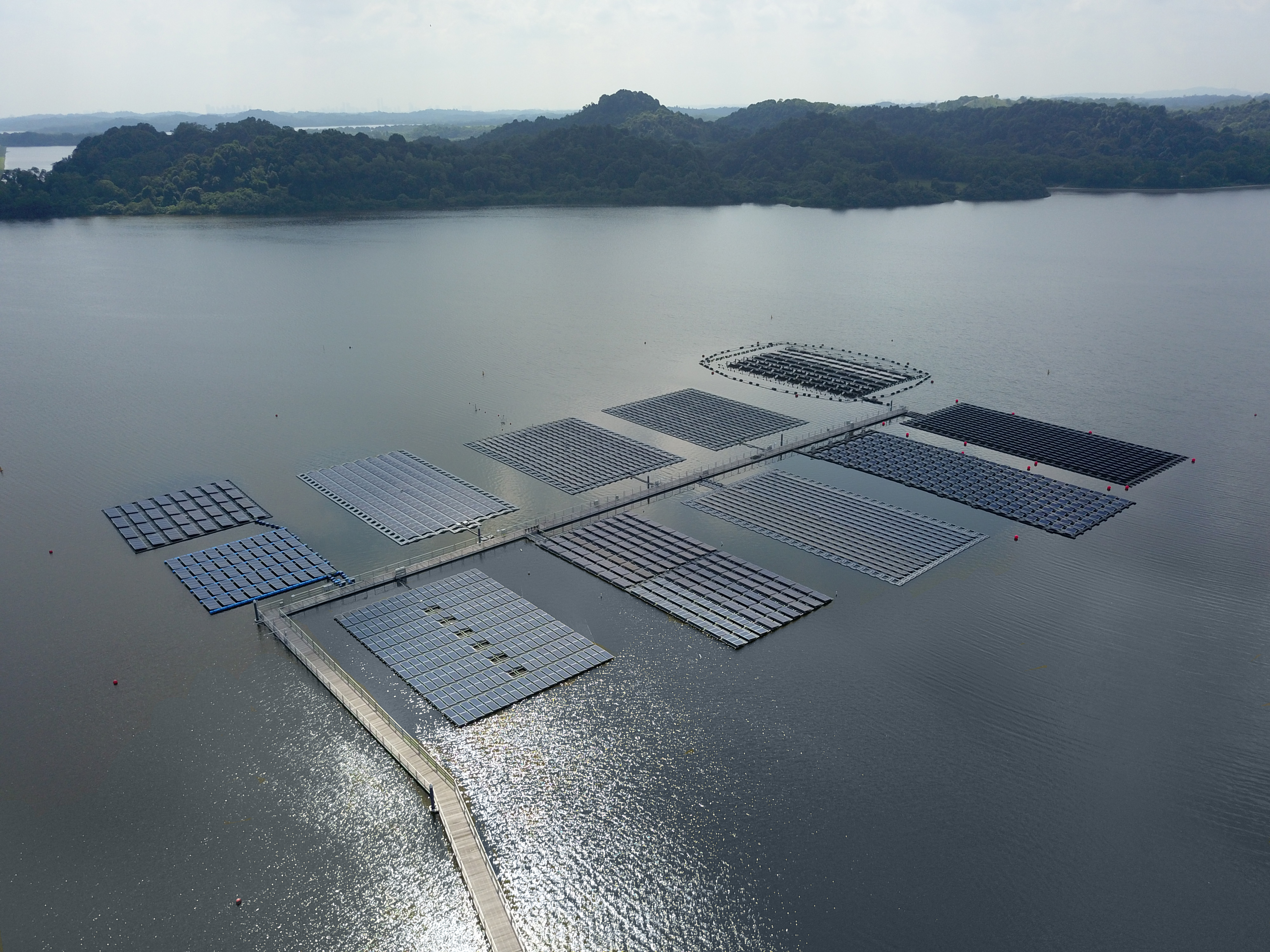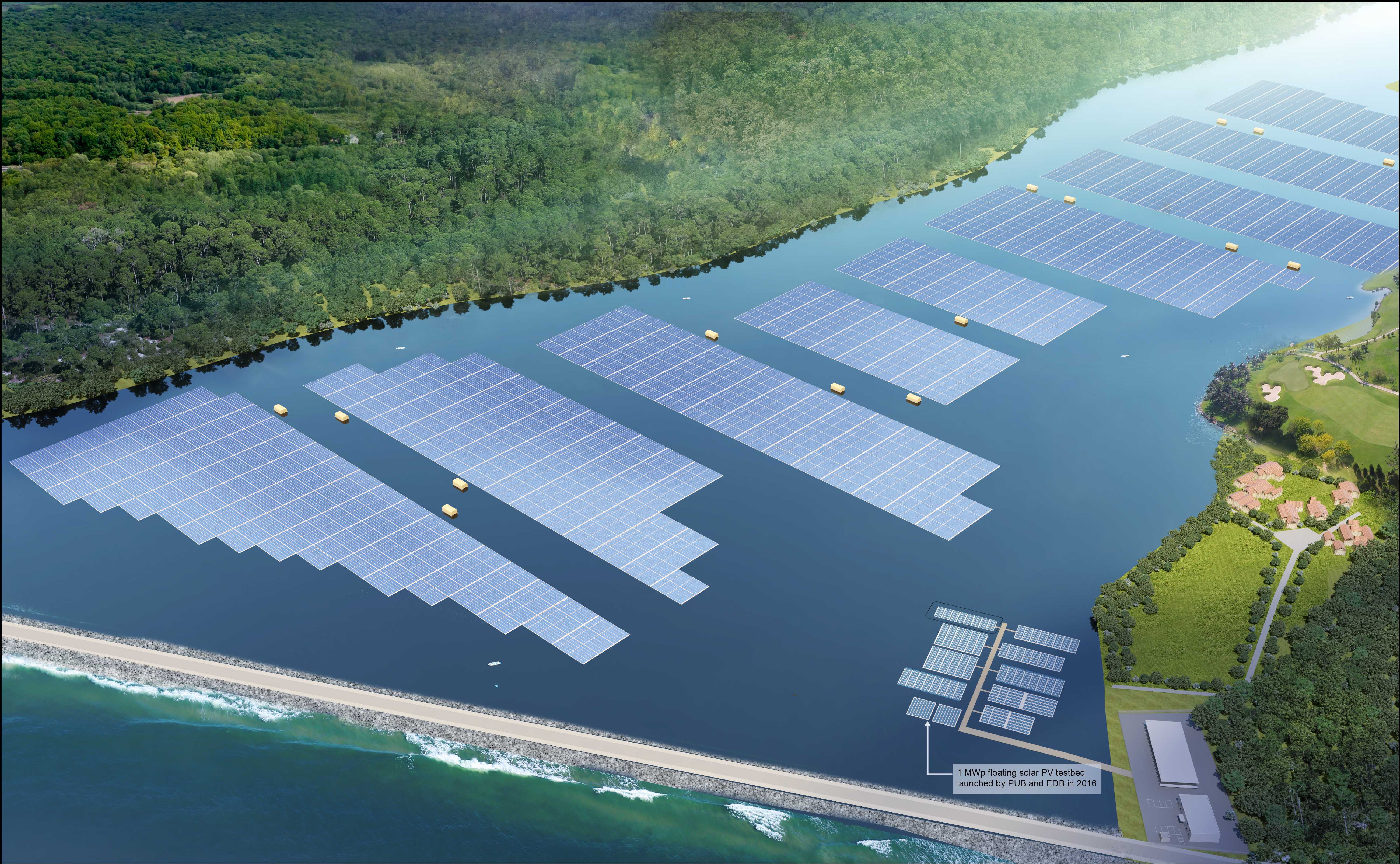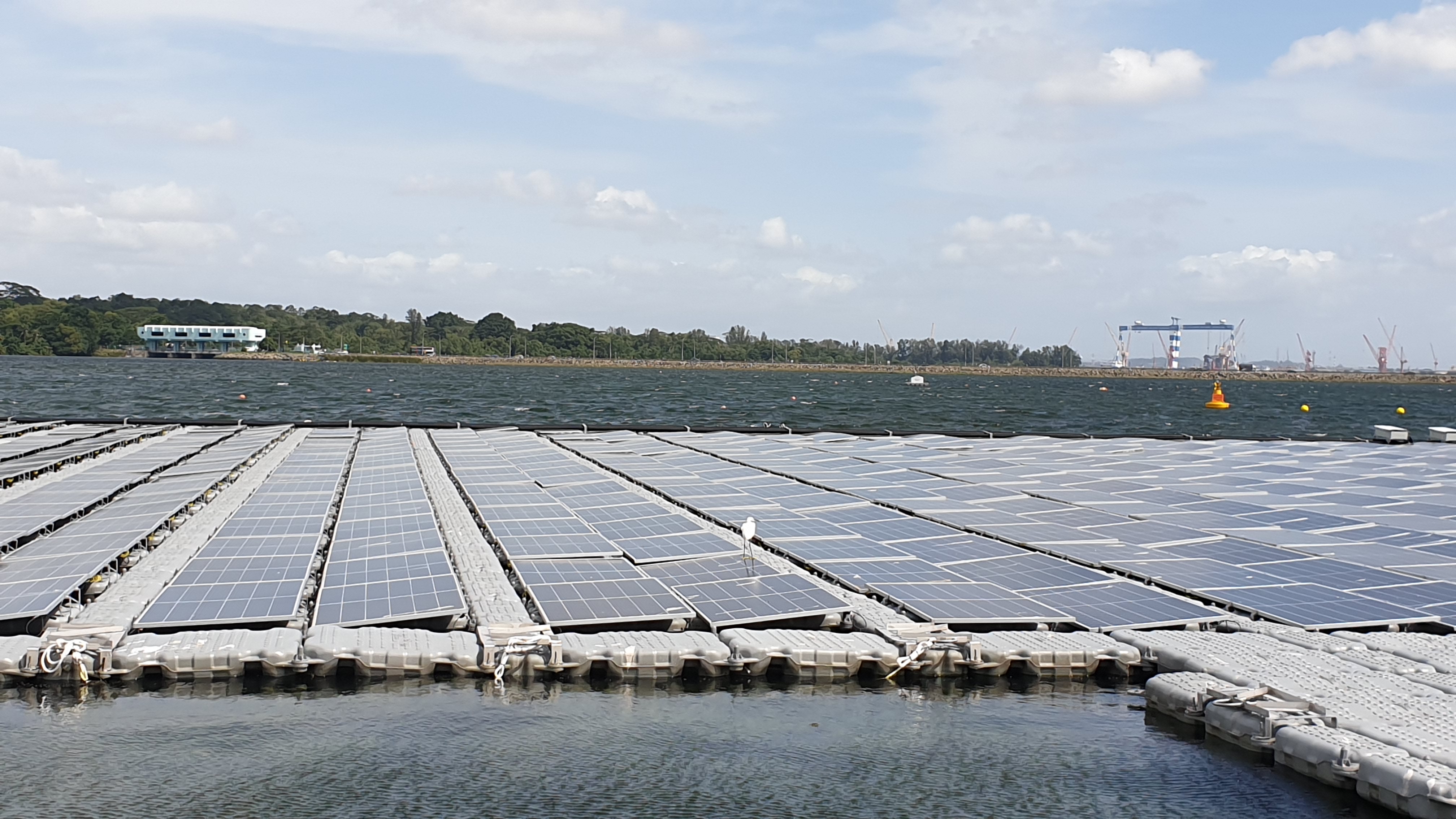

In 2018, PUB called a tender to conduct engineering studies for the deployment of two smaller floating solar PV systems at Bedok and Lower Seletar Reservoirs. Following up from the successful studies, PUB awarded a contract to local engineering firm BBR Greentech Pte Ltd to build the systems in 2019. BBR Greentech was one of the companies that had participated in the 1 MWp floating solar PV testbed on Tengeh Reservoir.
Both 1.5 MWp floating solar PV systems are deployed on the reservoir surfaces adjacent to Bedok Pumping Station and the Lower Seletar Pumping Station, taking up 2% of Bedok Reservoir's and 0.5% of Lower Seletar Reservoir's surface areas. These two floating solar PV systems can collectively generate enough energy to power about 800 four-room HDB flats and reduce PUB's carbon emissions by around 1.5 kilotonnes annually – or the same as taking 300 cars off Singapore's roads.


1.5 MWp floating solar PV system at Lower Seletar Reservoir


In 2018, PUB called a tender to conduct engineering studies for the deployment of two smaller floating solar PV systems at Bedok and Lower Seletar Reservoirs. Following up from the successful studies, PUB awarded a contract to local engineering firm BBR Greentech Pte Ltd to build the systems in 2019. BBR Greentech was one of the companies that had participated in the 1 MWp floating solar PV testbed on Tengeh Reservoir.
Both 1.5 MWp floating solar PV systems are deployed on the reservoir surfaces adjacent to Bedok Pumping Station and the Lower Seletar Pumping Station, taking up 2% of Bedok Reservoir's and 0.5% of Lower Seletar Reservoir's surface areas. These two floating solar PV systems can collectively generate enough energy to power about 800 four-room HDB flats and reduce PUB's carbon emissions by around 1.5 kilotonnes annually – or the same as taking 300 cars off Singapore's roads.


1.5 MWp floating solar PV system at Lower Seletar Reservoir